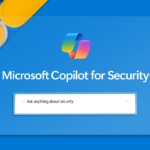<p>Back in April I published a post about the end of support for Windows XP called <a href="/b/security/archive/2013/04/09/the-countdown-begins-support-for-windows-xp-ends-on-april-8-2014.aspx">The Countdown Begins: Support for Windows XP Ends on April 8, 2014</a>. Since then, many of the customers I have talked to have moved, or are in the process of moving, their organizations from Windows XP to modern operating systems like Windows 7 or Windows 8.</p>
<p>There is a sense of urgency because after April 8, Windows XP Service Pack 3 (SP3) customers will no longer receive new security updates, non-security hotfixes, free or paid assisted support options or online technical content updates. This means that any new vulnerabilities discovered in Windows XP after its “end of life” will not be addressed by new security updates from Microsoft. Still, I have talked to some customers who, for one reason or another, will not have completely migrated from Windows XP before April 8. I have even talked to some customers that say they won’t migrate from Windows XP until the hardware it’s running on fails.</p>
<p>What is the risk of continuing to run Windows XP after its end of support date? One risk is that attackers will have the advantage over defenders who choose to run Windows XP because attackers will likely have more information about vulnerabilities in Windows XP than defenders. Let me explain why this will be the case. <a href="/b/security/archive/2013/08/06/the-risk-of-running-windows-xp-after-support-ends.aspx">Read more.</a></p>





